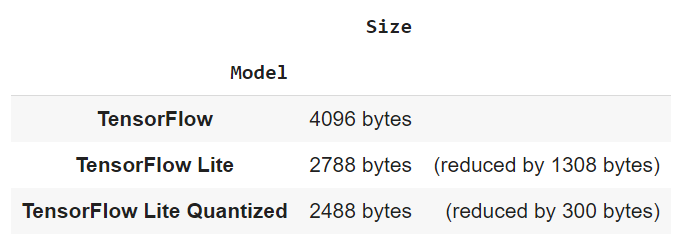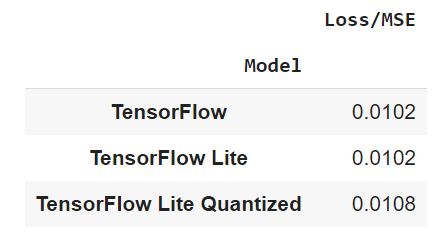Now programmers are faced with a difficult task - how to implement such a cumbersome structure as a neural network - in, say, a bracelet? How to optimize the power consumption of the model? What is the price of such optimizations, as well as how justified is the introduction of models into small devices, and why it is impossible to do without it.

And what is the use?
Let's imagine an expensive industrial sensor - 1000 measurements per second, a temperature sensor, vibration measurement, data transmission over 10 km, a powerful processor - 20 million operations per second! Its job is to send data about temperature, vibration, as well as the values of other parameters to the server to prevent equipment breakdowns. But here's the bad luck - 99% of the data sent by him is useless, from it - a net loss for electricity. And there can be tens and hundreds of such sensors in production.
, - ? ? , ? , " " " !" TinyML.

, , . "" : , , , , ..

- - . , , WiFi, Bluetooth .
- - . - , " ".
- - . , . , , ... . , ( - TinyML).
- - . - , , .
- - , int , float - .
Quantization
, . - , . , 32 . , 8 ? , .

- 1 . . , .

, , . , .
#
x_values = np.random.uniform(
low=0, high=2*math.pi, size=1000).astype(np.float32)
#
np.random.shuffle(x_values)
y_values = np.sin(x_values).astype(np.float32)
# , " "
y_values += 0.1 * np.random.randn(*y_values.shape)
plt.plot(x_values, y_values, 'b.')
plt.show()


!
#
model = tf.keras.Sequential()
model.add(keras.layers.Dense(16, activation='relu', input_shape=(1,)))
model.add(keras.layers.Dense(16, activation='relu'))
model.add(keras.layers.Dense(1))
model.compile(optimizer='adam', loss="mse", metrics=["mae"])
#
history = model.fit(x_train, y_train, epochs=500, batch_size=64,
validation_data=(x_validate, y_validate))
#
model.save(MODEL_TF)
, :

, . "" . TFLiteConverter, .
# TensorFlow Lite
converter = tf.lite.TFLiteConverter.from_saved_model(MODEL_TF)
model_no_quant_tflite = converter.convert()
#
open(MODEL_NO_QUANT_TFLITE, "wb").write(model_no_quant_tflite)
# TensorFlow Lite
def representative_dataset():
for i in range(500):
yield([x_train[i].reshape(1, 1)])
converter.optimizations = [tf.lite.Optimize.DEFAULT]
# , int
converter.target_spec.supported_ops = [tf.lite.OpsSet.TFLITE_BUILTINS_INT8]
converter.inference_input_type = tf.int8
converter.inference_output_type = tf.int8
# ,
converter.representative_dataset = representative_dataset
model_tflite = converter.convert()
open(MODEL_TFLITE, "wb").write(model_tflite)
: , TensorFlow Lite , TensorFlow Lite . , .
pd.DataFrame.from_records(
[["TensorFlow", f"{size_tf} bytes", ""],
["TensorFlow Lite", f"{size_no_quant_tflite} bytes ", f"(reduced by {size_tf - size_no_quant_tflite} bytes)"],
["TensorFlow Lite Quantized", f"{size_tflite} bytes", f"(reduced by {size_no_quant_tflite - size_tflite} bytes)"]],
columns = ["Model", "Size", ""], index="Model")

, , TensorFlow Lite 32% , 40% ! , , ?

, . , , !
Python , , , ? , . ! Ubuntu, Windows - .
# xxd
!apt-get update && apt-get -qq install xxd
#
!xxd -i {MODEL_TFLITE} > {MODEL_TFLITE_MICRO}
#
REPLACE_TEXT = MODEL_TFLITE.replace('/', '_').replace('.', '_')
!sed -i 's/'{REPLACE_TEXT}'/g_model/g' {MODEL_TFLITE_MICRO}
# , C
!cat {MODEL_TFLITE_MICRO}

, 400.
// ,
float x = 0.0f;
float y_true = sin(x);
//
tflite::MicroErrorReporter micro_error_reporter;
//
const tflite::Model* model = ::tflite::GetModel(g_model);
. ? , : , . - , . , .
, :
x = 5.f;
y_true = sin(x);
input->data.int8[0] = x / input_scale + input_zero_point;
interpreter.Invoke();
y_pred = (output->data.int8[0] - output_zero_point) * output_scale;
TF_LITE_MICRO_EXPECT_NEAR(y_true, y_pred, epsilon);
Edge Impulse
Edge Impulse , TinyML.

, , . , , , - .
- TinyML . ( , ..) . 20% , , .
, NoML Community - https://t.me/noml_community.